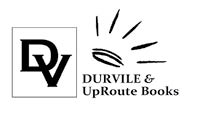


we remember
the coming of the
white man
by Elizabeth Yakeleya, Sarah Simon
and other Sahtú and Gwich’in Elders
GAHNAAANDAIH
Unjoo kat degehnoo daiʔ
anahgoogwaandak

Sarah Stewart, Editor, Raymond Yakeleya, Foreword
Colette Poitras, Afterword
companion film
Available on Vimeo
Remastered video (55 min.) — https://vimeo.com/396055529
Director’s commentary (55 min.) — https://vimeo.com/396074132
Password: remember2020


UpRoute Imprint
of Durvile Publications Ltd.
Calgary, Alberta, Canada
www.durvile.com
Copyright © 2020 Raymond Yakeleya, Dene Nation
ISBN: 978-1-988824-56-7 (e-pub)
ISBN: 978-1-988824-24-6 (paperback + DVD)
ISBN: 978-1-988824-37-6 (audio)

Gwich’in translation in print edition
by Bella Ross and Sarah Jerome.
Cover image, Fort Providence school picnic, 1926,
Ernestine Burke Collection.
Durvile Publications would like to acknowledge the
financial support of
the Government of Canada through
Canadian Heritage Canada Book Fund
and the Government of Alberta, Alberta Media Fund.
Sarah Stewart wishes to thank
The Canada Council for support, while compiling and editing.


All rights reserved.

Dedication
We dedicate this book to all Indigenous Peoples of North America, and especially the youth. Our history, cultures, and perspectives are valuable as we begin new relationships with our countrymen and women across these lands. It is with this hope that we can find ways to respect each other, learn from each other and find ways to work together for the benefit of all. We have something important to contribute.
Contents
Contents
The Elders, Biographies
Foreword Raymond Yakeleya
Introduction Sarah Stewart
1. Early Days
2. Fur, Guns, First Contact
3. Family Life
4. Boat Time
5. Missionaries
6. Oil Discovery
7. Treaty 11
8. The Sickness
9. Uranium
10. First Machines
11. The Mad Trapper
12. Canol Road
13. Mackenzie Valley Pipeline
14. Time of Change
Afterword Colette Poitras
Acknowledgments Sarah Stewart
Contributors
The Elders, Biographies

Elizabeth Yakeleya (nee Blondin) a Willow Lake Dene, was born in 1906 in Norman Wells (Tlegohli) and was educated at the convent in Fort Providence (Zhahti Koe). In 1925 she married Johnny Yakeleya and they had twelve children.

Sarah Simon (nee Stewart), Gwich’in, was born in the Delta on the Mackenzie River (Deh Cho) in 1901. She married James Simon, who was later ordained an Anglican minister. Sarah travelled with James to Yukon as a missionary and served her people for many years as a mid-wife, nurse and interpreter. She translated for government officials, doctors and for her Chief, Johnny Kaye. In June 1982 she received the Commissioner’s Award for her service to her people and community. Sarah Simon died in 2001. She was 100 years old.

Mary Wilson, Slavey, was born 1920 in Fort Good Hope (K’asho Got’ine) and was educated in the convent school in Aklavik. She lived in Yellowknife and worked for the Dene Nation.

Joe Blondin, Slavey, was born in 1914 in Norman Wells. He was a trapper and hunter and was for many years a pilot with Northern Transportation Company. He was well known as a fiddle player and raconteur. He lived in Norman Wells (Tlegohli).

John Blondin, Willow Lake Dene, was born in 1903 in Norman Wells and lived in Fort Norman (Tulita). He was a hunter and trapper for all of his life. John Blondin is Elizabeth Yakeleya’s brother.

Isadore Yukon, Slavey, was born in 1920 and was raised close to Fort Norman (Tulita). He and other Dene leaders founded the settlement of Fort Franklin (Deline) where he was the Mayor. He was a trapper and hunter and also a pilot with the Northern Transportation Company. In 1974, he was awarded the Order of Canada.

Johnny Kaye (Kyikavichik), Gwich’in, was born at Old Crow Flats (Teechik) in 1891 and died in Fort McPherson (Teet’lit Zheh) in January 1982. He was the Headman in Fort McPherson and was one of the two men who signed Treaty 11 in 1921 on behalf of the Gwich’in People. He was the Chief of Fort McPherson from 1948 to 1960. He was also a hunter, a trapper, a special constable with the RCMP for three years and a church warden. His portrait hangs in the community hall in Fort McPherson which is named in his memory.

Jim Edwards Sittichinli, Gwich’in, was born in 1908 and lived in Aklavik. He was one of nine children born to Edward and Annie Shadah Sittichinli. He grew up on the land around Fort McPherson (Teet’lit Zheh) hunting, fishing and trapping. In 1933, he married Julia Greenland. They moved to Aklavik, where they stayed for many years and raised a large family. After the death of his father, Edward Sittichinli, Jim began his training for the ministry. He was ordained in 1943 and served for 30 years. In 1960, he was ordained a priest in the Anglican Church and assumed charge of the mission and All Saints Cathedral in Aklavik.

Peter Thompson, Gwich’in, was born in 1983 and died October 1979. He lived in Fort McPherson (Teet’lit Zheh) where he was a hunter and trapper.

Andrew Kunnizzi was born in 1892. He was a hunter and trapper, living in the Dawson region of the upper Peel Watershed. Many of his stories about the Yukon are preserved in the COPE Collection at the Northwest Territories Archives, which are located at the Prince of Wales Northern Heritage Centre in Yellowknife. He was a member of the party that retraced the Dawson Patrol route from Fort McPherson (Teet’lit Zheh) to Dawson, Yukon, in February 1970. He also worked for the Anglican Church for many years and was a full-time catechist.